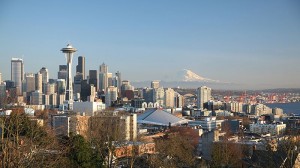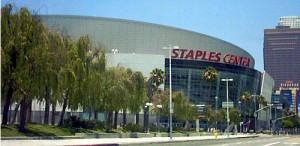
Don’t give up at halftime. Concentrate on winning the second half— Coach Paul “Bear” Bryant
Long-time Sonics play-by-play announcer Kevin Calabro has always possessed the ability to paint vivid pictures with the spoken word (flying chickens in a barnyard!). Hours after the Metropolitan King County Council voted 6-3 on Monday to approve an amended arena plan spearheaded by Seattle native Chris Hansen that could bring both the NBA and NHL back to Seattle, a pleased Calabro announced on 710 ESPN Seattle, “It’s halftime, baby, and the Sonics are in the lead.”
One down, one very big one to go.
The second major hurdle — approval by a skeptical, deeply political Seattle City Council — will clearly be much more difficult to obtain. Anticipating the likelihood of passage of the Memorandum of Understanding by the County and eager to deflect the heavy pressure that would soon be placed upon them, the City Council fired off a letter to Hansen just prior to the vote. The full text of the letter can be read here.
The Seattle City Council letter
The letter expresses a desire to see both the NBA and NHL return to the Emerald City, but just a few paragraphs later states that “the agreements do not represent an appropriate balance of public and private benefits.” The letter further claims the MOU does not “sufficiently protect the City from the financial risks inherent in the arena’s financing” and that without significant changes, “we do not believe that proceeding with the project would be in the City’s or public’s best interest.”
The arena proposal

Hansen’s proposal calls for the City to authorize $200 million in bonds toward the project, to combine with $290 million of private investor equity. Revenues generated by the arena would repay the bonds, with the City eventually owning the land and facility after the lease was up. It has been characterized as having the third-largest equity contribution of any arena of its type in the U.S., behind only the Staples Center in Los Angeles and Madison Square Garden in New York.
While rallying the public around the notion that the Sonics could return, the arena would be made NHL-compatible, with every effort made to secure an NHL franchise in the near term. Seattle has long been considered an ideal market for the NHL and came close several times to being awarded a franchise. Had Key Arena been constructed properly, the city would likely have received a franchise during the 1990’s.
Appeasing the opposition
In stating that the proposal as written is not in the City’s best interest, the City Council has eschewed the obvious benefits of a large equity infusion within its borders, as well as ignored the job multiplier effect. Rather, it has taken on the quixotic task of attempting to balance conflicting agendas and significant competing interests. It has exacted a slow, ponderous approach, grinding the proposal through a painfully deliberate process. Despite the equity-heavy agreement, the Council wants more, in large part because of past promises and current politics.
The Port of Seattle has gone on record against the plan, citing jobs and traffic as its chief concerns. The Seattle Mariners have also stated their opposition, also mentioning traffic as well as parking considerations inherent in building a new, 18,000 arena in the “SoDo” stadium district of Seattle.
The City Council made promises to the Port regarding traffic mitigation that were allegedly not kept after Safeco Field was built in 1999. It appears both the Mariners and the Port are flexing their muscles and exacting their respective pounds of flesh to make sure those promises are finally fulfilled.
With respect to politics, it has been suggested that several of the Council members have designs on the Mayoral position and are looking for a political victory to hang their hats upon. Further speculation has many of the Council members at odds with the mayor, and given his strong support for the plan, have thrown up roadblocks to thwart him receiving credit for the return of the Sonics.
The next steps

Hansen stated on 710 ESPN Seattle’s “Brock and Salk” show Tuesday that the Council had been “telegraphing” potential changes to the proposal and he was opening to listening to their concerns. However, although he is willing to make certain changes, Hansen said “the deal is not going to work if we are on the hook for trying to fix all of SoDo’s traffic problems.” The Council has suggested that revenues generated by the arena be used in part for traffic mitigation. Hansen pointed out that the revenue streams were carefully calculated to support a joint-use arena as currently configured, which would cost at least $30 million more than a basketball-only facility. “It is completely unfair to ask us to build a hockey/basketball arena for the same price,” he said.
For now, the two sides will continue negotiating. Regardless of the political jockeying and self-interest machinations, it’s halftime, baby, and this game may be headed to overtime.